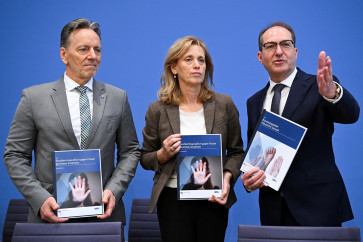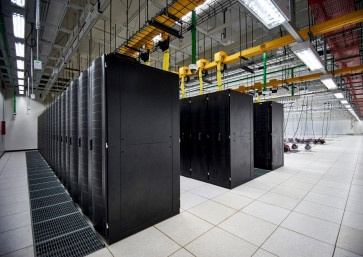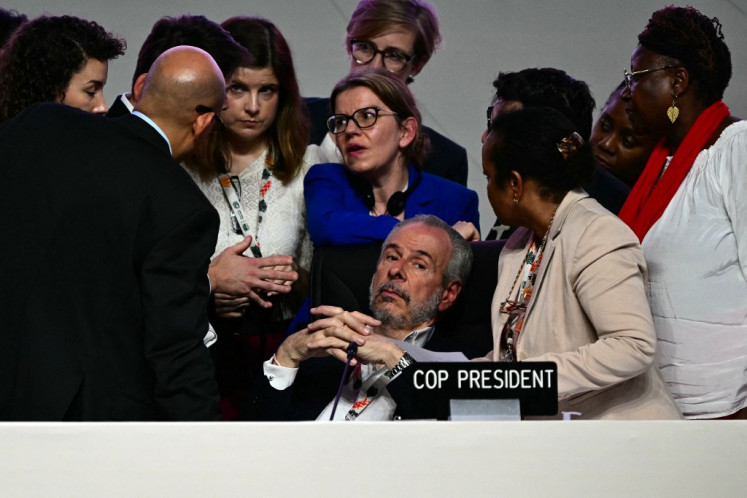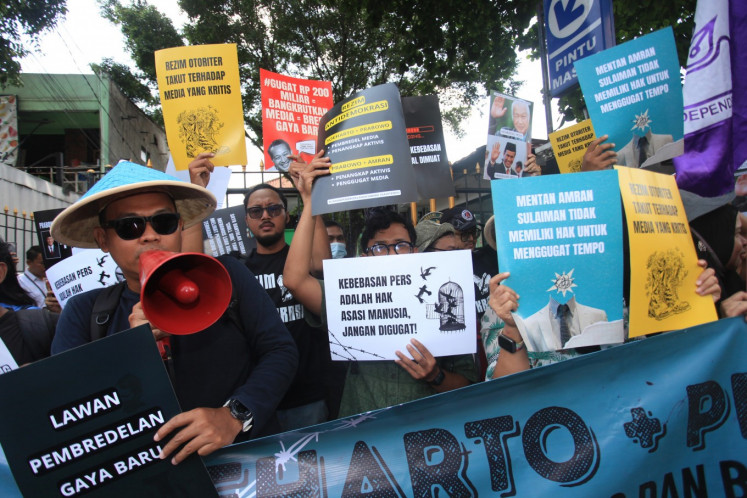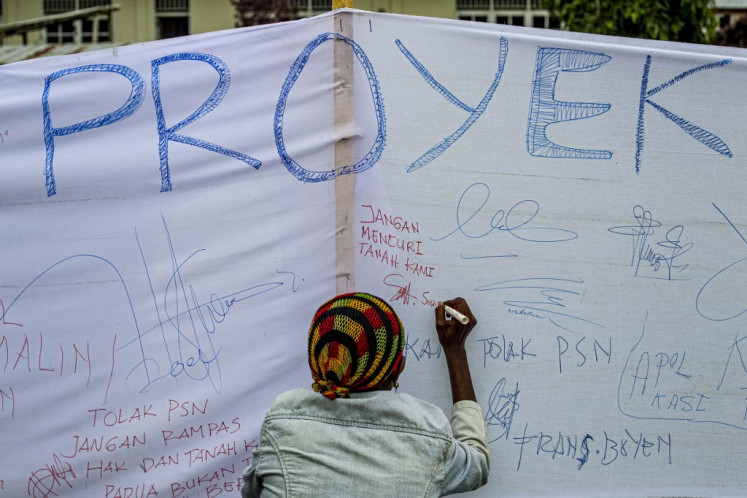Popular Reads
Top Results
Can't find what you're looking for?
View all search resultsPopular Reads
Top Results
Can't find what you're looking for?
View all search resultsLack of spectrum sharing may slow digital TV, 3G in Indonesia
The government’s quest to improve broadband service and introduce digital television in Indonesia is proving nettlesome, as telecommunications operators and broadcasters are showing signs of an unwillingness to share spectrum
Change text size
Gift Premium Articles
to Anyone
T
he government’s quest to improve broadband service and introduce digital television in Indonesia is proving nettlesome, as telecommunications operators and broadcasters are showing signs of an unwillingness to share spectrum.
Ivan Cahya Permana, the head of service control systems at PT Telkomsel, said that the company needed more spectrum, given that the channels allotted them have hit full capacity.
Telkomsel currently provides voice, text and data services through two channels allocated to it by the government.
However, with more than 110 million subscribers consuming an increasing amount of data, Telkomsel has repeatedly said that the firm needed more spectrum to expand third generation (3G) service.
“We need more spectrum because we have a large number of customers to serve,” Ivan said at a recent seminar held by the Indonesian Information and Communication Technologies Society
(Mastel).
Ivan added that the company was keen on occupying the 700 megahertz (MHz) spectrum, which would allow its towers to provide 3G coverage for a 5-kilometer radius.
On the other hand, the 2,100 MHz spectrum, access to which the government plans to auction off this year, could only cover a radius of 3 kilometers, he said.
“We would like to provide the widest coverage so we can provide as much service to our customers as possible, especially those who are living in remote areas.”
The 700 MHz spectrum is currently used by television stations for analog broadcasts. Telecommunications operators want the government to assign a different part of the spectrum to broadcasters so they can expand 3G service.
The government has previously announced plans to rearrange the spectrum allotted to television broadcasters, requiring them to upgrade from analog to digital, which requires a smaller section of the spectrum, by 2018.
The leftover spectrum could then be auctioned off to telecommunication operators for 3G or Long Term Evolution (LTE) telecommunications, which many operators have said was best suited for data-hungry customers.
Television broadcasters, however, have been reticent to go digital, citing costs.
Hardijanto Soeroso, the spokesman for PT Surya Citra Televisi (SCTV), said the network faced many issues in going digital, foremost being a potential decline in its number of viewers, who would have to purchase decoders to use their older existing analog television sets to receive digital broadcasts.
The government has not come up with a plan on how to get people in Indonesia to accept digital television without subsidizing or paying for decoders.
According to Hardijanto, the network’s viewer numbers would decline if people balked in buying the decoders, which typically cost from US$40 to $80.
“This would mean that we would not have any viewers to watch our broadcasts. Advertisers would not find us attractive if we had few viewers, and this would affect our revenues,” he said.
According to Hardijanto, stations that have made a considerable investment in analog broadcast technology would have to allocate funds for new equipment to produce broadcasts.
“What about the smaller stations in rural areas that have invested in analog? Digitization should take place in big cities first, with smaller cities catching up when they are ready,” Hardijanto said.
The government and telecommunications operators must support the shift to digital broadcasts by subsidizing and distributing decoders, among other things.
“Those who would benefit from this should make a contribution,” Hardijanto said, referring to telecommunication operators.
Denny Setiawan, the chief of the Spectrum Management Directorate General at the Communications and Information Ministry, said the migration to digital broadcasts to provide space for operators was “a win-win scenario”.
According to Denny, digitalization would allow the same amount of the broadcast spectrum to be divided among more digital broadcasters, leading to a proliferation of new stations.
“The proliferation of stations would open opportunities for production houses, advertisers and the like to create content for these stations,” he said.
Operators, too, would benefit, he said, as they would divide the spectrum currently allocated for analog television broadcasts to expand their 3G service.
Therefore, both the government and operators should help broadcasters, especially in the provision of decoders, to facilitate the switch over, he claimed.
Denny said that either the government or the private sector would need to provide television decoders for at least 60 million televisions across Indonesia, preferably through subsidies.
“That’s why broadcasters, operators and the government have to sit down together to find solutions for everyone’s concerns,” he said.


